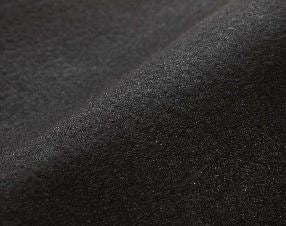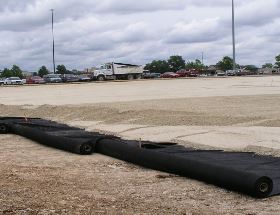Geotex 1001
This long-lasting non-woven geotextile is designed for rugged applications where a high tensile strength non-woven is required. Out of the three different classes, this fabric is classified as a heavyweight non-woven. It’s composed from polypropylene fibers that are needle-punched in a random 3-D pattern which allows for water permeability. The fabric is a cost-effective solution for various applications including stabilization and substrate separation. This non-woven geotextile fabric is UV and rot-resistant, it will withstand exposure to naturally occurring chemicals, is pH stable, offers a high level of filtration, and has comparable strength to woven geotextile fabrics.
The needle-punched fabric provides a permittivity rating of 1.2 sec-1, and a flow rate of 80 GPM/ft². Common applications for the GEOTEX 1001 are slope stabilization, aggregate separation, erosion control, and a protective cushion and liner for geomembrane in retention ponds.
It's Important To Choose The Right Geotextile Fabric
As popular as geotextile fabrics have become for today's job sites, it's hard to believe they did not even exist 70 years ago! This amazing technology is used to separate soil layers and has turned into a multi-billion dollar industry.
Even though the market for geotextiles did not exist 70 years ago, by 2018 it turned into a 4 billion operation worldwide. It continues to grow at an alarming rate at a compounding annual growth rate (CAGR) of 12.1% and is predicted to continue growing through the year 2025.
The rapid growth of geotextiles has been fueled by the effectiveness of the products. The use of new technology has grown into an accepted best management practice required by government agencies, specified by design consultants, and used regularly by contractors, cities, towns, and property owners.
Geotextile fabrics that are correctly installed are offering considerable value. The most significant and obvious benefit for all geotextiles is soil separation. By separating soil layers the fabric prevents soils from mixing.
Before the transformation of geotextile technology, the construction world struggled with mixing soil layers during site construction. In road building, processed gravel applied to the surface would often sink into the softer sub-soils. When geotextile fabrics are correctly installed over the subsurface material, mixing and contamination are effectively removed.
To get the best results, choosing the most appropriate and site-specific geotextile fabric is essential. The two most commonly used kinds are known as woven and nonwoven. Woven geotextiles are made of woven silt film polypropylene material. They combine high strength and low penetrability, making them the best choice for applications that need both separation and filtration. Nonwoven fabrics are made of needle-punched polypropylene for separation and filtration to take place at the same time.
Outside of woven and nonwoven, two other valuable geotextile product groups for ground stabilization are woven monofilament and spun-bound geotextiles. Interchangeably, spun-bound fabrics combine the toughness of woven geotextiles with the penetrability of nonwoven products.
Nonwoven Geotextiles
Nonwoven geotextiles are selected when both soil separations and permeability are needed. These products are usually used to wrap French drains or in partnership with other sub-surface drainage solutions. Nonwovens are typically used under rock rip-rap revetment where both separation and drainage are critical.
A good example is if a new gravel driveway is under construction over dry or well-drained subsoils, it will be beneficial for moisture to pass through the fabric in both directions. This condition allows absorption into the subsurface during and after rain events and facilitates evaporation between rainy times.






